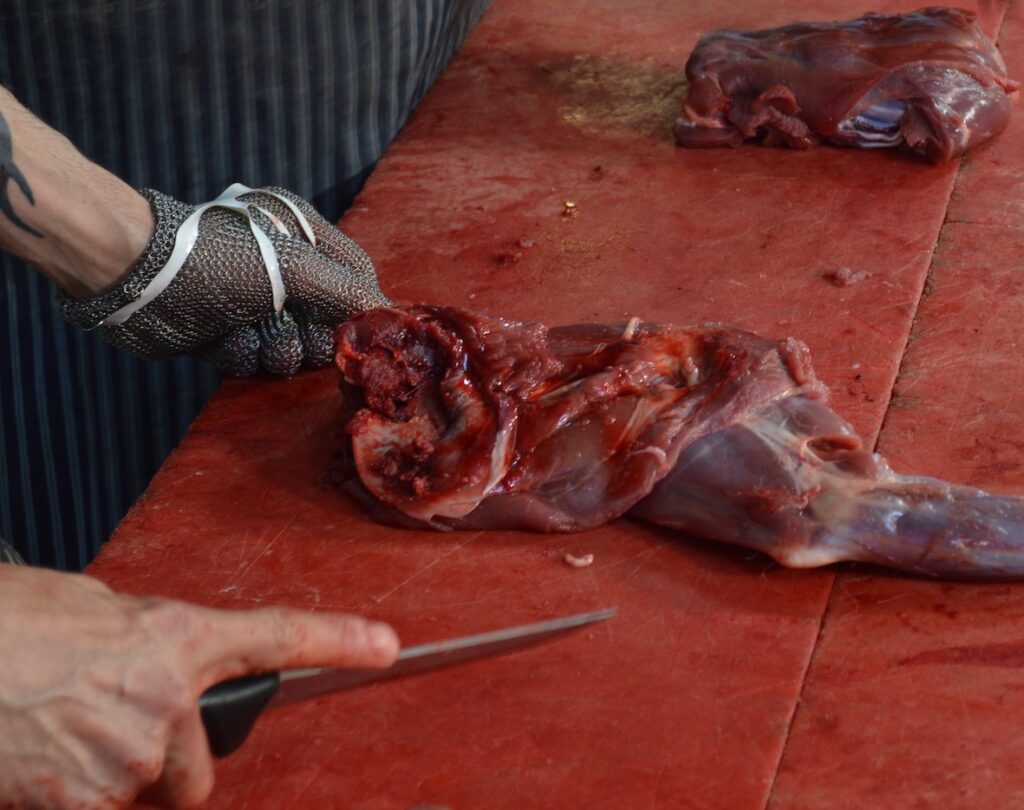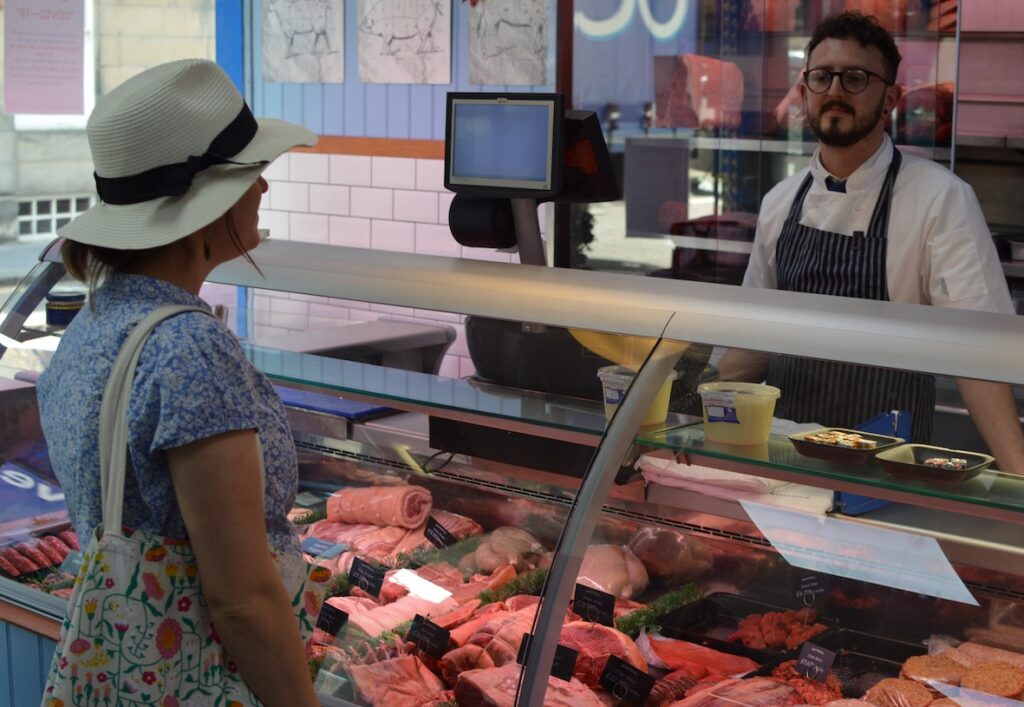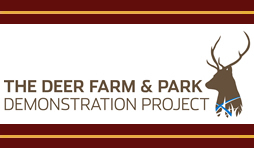There are many advantages in local stalkers supplying local butchers:
- The supply chain is short and food miles are greatly reduced
- The ‘story’ of local provenance is increasingly recognised as a valuable marketing opportunity
- Traceability is simplified with just two in the supply chain
- Record-keeping is straightforward
- The returns to both stalker and butcher, should be greater.
However, this short supply chain poses a number of risks which must be managed rigorously between the stalker and the butcher.

The supply of venison to any business either for onward sale to the public or for direct consumption by the public, must be legal and undertaken within all applicable food and food hygiene regulations, with strict adherence to Best Practice Guidance, and diligent record keeping by all parties.
Short films
1. Venison butchery – breaking down the carcass (no sub-titles)
2. Adding value ideas for butchers (no sub-titles)
3. Adding value ideas for butchers (subtitles)
Supply of venison by the stalker to the butcher
If you are a Trained Hunter looking for local outlets for your venison, or if you are a butcher looking for a supply of locally shot venison, contact the Scottish Venison Association and we will do our best to make that connection. Contact mail@scottish-venison.info
For current opportunities matching stalker and butcher see section on trade pages.
Note that we will also feature all those outlets stocking venison, FREE on this website, in our Where to buy Scottish venison pages.
Everything the stalker needs to know about the supply of small quantities of venison locally – download, print and read (updated December 2020)
Supply in skin – unprepared
- Carcass preparation by the stalker is normally limited to a gralloching and lardering procedure, up to, but not including the skinning of the carcass
- Supply can be made no further than the neighbouring local authority area, or 50km distant; whichever is greater.
- Supply must be in line with the Deer Acts, Local Authority Environmental Health guidelines, Food Acts and Food Standards Scotland guidance.
- Best Practice should be followed.
- The most important aspect of supply is that the chill chain should be maintained downward from the point that the animal is shot. The carcass should reach a chill as soon as possible.
- Trained hunter status and a trained hunter declaration ensure traceability and the promotion of standards.
- Stalkers do NOT have to register with the Local Authority as a food business although it is advised that they contact them
- HACCP principles must be followed by law, but HACCP does not need to be written down.
- Records must be kept
- Either the stalker or the butcher must be a Licensed Venison Dealer
Supply out of skin – prepared
- Carcass preparation includes removal of the skin and can include sectioning the meat into butchered parts and removing meat from skeleton.
- All of the above bullets apply, however, to supply carcasses out of skin, the stalker must register with their Local Authority as a food business.
- It is unlikely that a stalker will be able to undertake this preparation work without a dedicated space in which to perform the tasks, although in a domestic setting, it is possible. The space would be subject to inspection by Local Authority staff, and direction given as to how comply with the requirements of a Food Premises.
- A HACCP is required
Supporting information
Guide to the legislation and regulatory requirement for the supply of venison in Scotland
Best
Practice Guidance
Frequently asked questions
1. What parameters does a stalker who undertakes the skinning of a carcass have to meet in addition to those outlined in Best Practice? For example, having dedicated premises inspected by local authority?
There is a big difference between the supply of in-skin and skinned carcasses. If skinning, a practitioner will ideally operate in a dedicated space where the task can be completed. It will be inspected by the Local Authority and regarded as a Food Premises. It will be maintained clean and meet food hygiene requirements.
The stalker would be required to follow higher hygiene requirements than those supplying in-skin. They will maintain separation between skinned carcasses and any other carcasses stored in-skin, and also from any feathered game. A supply of potable water would be required and the premises would be equipped with larder utensils, different to those used for basic gralloching away from the premises.
Unless the stalker is equipped with a large refrigerator or chiller unit, the carcass should be delivered to the butcher as soon as possible, and the chill chain maintained throughout.
The premises will operate with a HACCP – as distinct from just following HACCP principles.
2. Should the stalker be registered food business with Local Authority?
The stalker would need to register their premises
with the Local Authority as a food business, or at least be able to demonstrate
that they have tried to register. A discussion with your Local Authority for
whatever circumstance is strongly encouraged.
3. Does the butcher taking the skinned carcass require a Venison Dealer
Licence (VDL) if the stalker has one?
Either the butcher or the stalker must hold a VDL. It makes sense that if the butcher is receiving carcasses from a number of stalkers (within the parameters of the Trained Hunter exemption) that the butcher would hold a VDL.

4. Does the butcher need a separate area for prep/butchery/cutting of deer?
Not if the carcass
is supplied out of skin but, if supplied in skin they must have physical or temporal
separation of in-skin (‘dirty’) and ‘clean’ (skinned) carcasses.
5. What about transport of a skinned carcass? What is recommended?
Transfer by hanging or in a clean, dry tray, cool box or wrapper with freezer blocks is acceptable, and the downward cold chain maintained. Transfer should be made as soon as possible to a chiller and cross contamination rigorously guarded against. Everything should be thoroughly cleaned and disinfected between carcasses, and after use.
The Best Practice Guide for venison carcass preparation is available here.
This is an initiative by SVA, Scottish Craft Butchers, SAOS and NatureScot.


